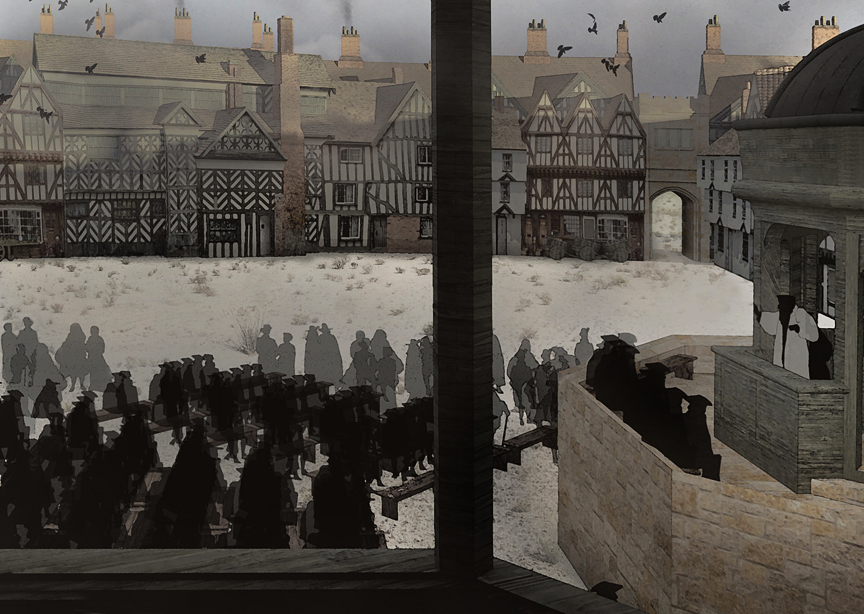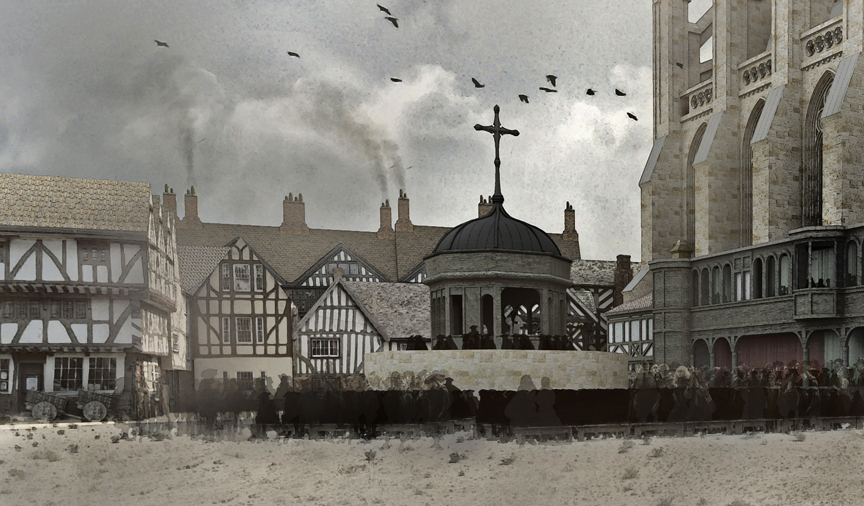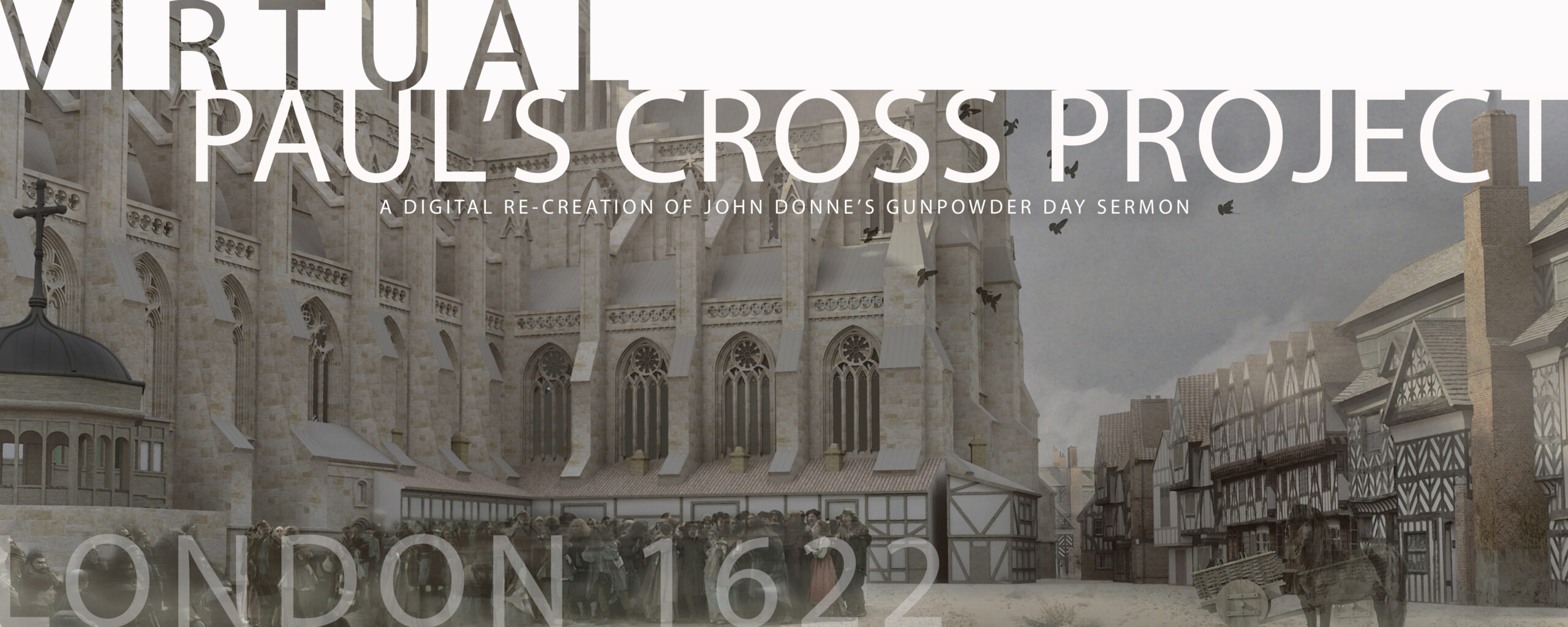Purpose
Exploring Early Modern Preaching Through Performance
The Virtual Paul’s Cross Project helps us to explore public preaching in early modern London, enabling us to experience a Paul’s Cross sermon as a performance, as an event unfolding in real time in the context of an interactive and collaborative occasion. This Project uses architectural modeling software and acoustic simulation software to give us access experientially to a particular event from the past – the Paul’s Cross sermon John Donne delivered on Tuesday, November 5th, 1622.
These digital tools, customarily used by architects and designers to anticipate the visual and acoustic properties of spaces that are not yet constructed, are here used to recreate the visual and acoustic properties of spaces that have not existed for hundreds of years.
These tools enable us to integrate the physical traces of preFire St Paul’s Cathedral with the surviving visual record of the cathedral and its surroundings to create a visual model of the Cathedral and its churchyard. They also enable us to experience a historically faithful interpretation of Donne’s preaching style, based on contemporary descriptions of his capacity to engage his congregations imaginatively and emotionally and to delight them with his wit.
In accord with the methodological principles for developing computer-based visualizations (and now auralizations) of historically significant cultural sites set forth in the London Charter for the Computer-based Visualisation of Cultural Heritage, the Virtual Paul’s Cross Project is defined as a “evidence-based restoration” of the north east end of Paul’s Churchyard in November of 1622.
Following the Charter’s concern for the importance of intellectual transparency in computer-based modeling and visualization of historic sites, the Virtual Paul’s Cross Project lists all research sources and seeks to clarify how the various kinds of historic materials came together to make possible what one sees and hears on this site. This includes discussions of sources for all the elements of what one sees and hears on this site, as well as assessment of the relative values of different kinds of evidence.
In addition, clear distinctions are made between those aspects of the site that 1. represent historic information, or 2. offer representative approximations of lost structures, or 3. recreate lost experiences. In the case of the latter of these aspects of the Virtual Paul’s Cross Project, the grounds for belief in the (extent of the) accuracy of approximations or recreations, as well as careful presentation of the assumptions guiding their development and realization are extensively delineated.
This approach is intended to help us to understand and evaluate our assumptions about the look and sound of the Paul’s Cross sermon, to add experience in real time to our repertory of tools for interpreting these events, and – because it is flexible and open to change – to create the opportunity for testing and evaluating multiple models of the event it recreates as new information and new interpretations emerge.

Paul’s Cross from the Sermon House. From the Visual Model by Joshua Stephens, rendered by Jordan Gray. 
Paul’s Cross from the Church Yard, about 50 feet from the Cross. From the Visual Model by Joshua Stephens, rendered by Jordan Gray.
